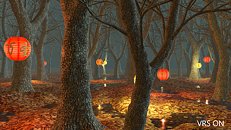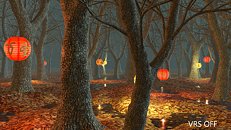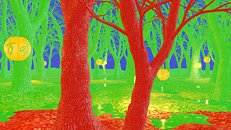Raevenlord
News Editor
- Joined
- Aug 12, 2016
- Messages
- 3,755 (1.17/day)
- Location
- Portugal
| System Name | The Ryzening |
|---|---|
| Processor | AMD Ryzen 9 5900X |
| Motherboard | MSI X570 MAG TOMAHAWK |
| Cooling | Lian Li Galahad 360mm AIO |
| Memory | 32 GB G.Skill Trident Z F4-3733 (4x 8 GB) |
| Video Card(s) | Gigabyte RTX 3070 Ti |
| Storage | Boot: Transcend MTE220S 2TB, Kintson A2000 1TB, Seagate Firewolf Pro 14 TB |
| Display(s) | Acer Nitro VG270UP (1440p 144 Hz IPS) |
| Case | Lian Li O11DX Dynamic White |
| Audio Device(s) | iFi Audio Zen DAC |
| Power Supply | Seasonic Focus+ 750 W |
| Mouse | Cooler Master Masterkeys Lite L |
| Keyboard | Cooler Master Masterkeys Lite L |
| Software | Windows 10 x64 |
3DMark today announced they've introduced a new benchmarking feature. Specifically developed to test Variable Rate Shading (VRS) performance and image quality differences, the new feature allows users to actually visualize the performance and image quality differences associated with more aggressive (or less aggressive) VRS settings. The algorithm is a smart one - it aims to reduce the number of pixel shader operations on surfaces where detail isn't as important (such as frame edges, fast-moving objects, darkened areas, etc) so as to improve performance and shave some precious milliseconds in the deployment of each frame.
To run this test, you will need Windows 10 version 1903 or later and a DirectX 12 GPU that supports Tier 1 VRS and the "AdditionalShadingRatesSupported" capability, such as an NVIDIA Turing-based GPU or an Intel Ice Lake CPU. The VRS feature test is available now as a free update for 3DMark Advanced Edition, or from now until September 2, 3DMark is 75% off when you buy it from Steam or the UL benchmarks website.



View at TechPowerUp Main Site
To run this test, you will need Windows 10 version 1903 or later and a DirectX 12 GPU that supports Tier 1 VRS and the "AdditionalShadingRatesSupported" capability, such as an NVIDIA Turing-based GPU or an Intel Ice Lake CPU. The VRS feature test is available now as a free update for 3DMark Advanced Edition, or from now until September 2, 3DMark is 75% off when you buy it from Steam or the UL benchmarks website.



View at TechPowerUp Main Site





